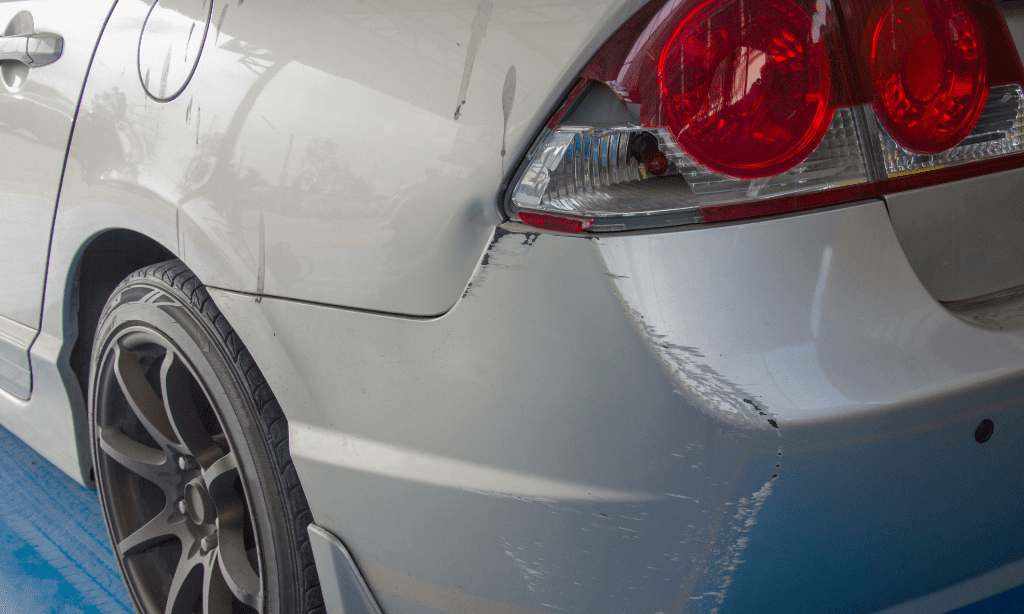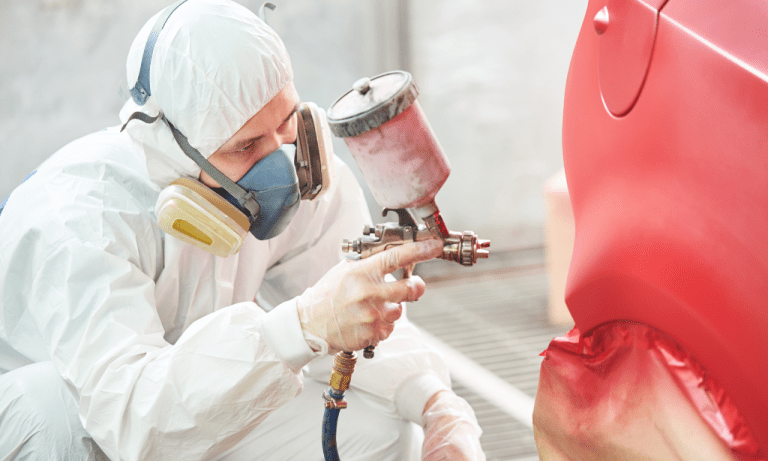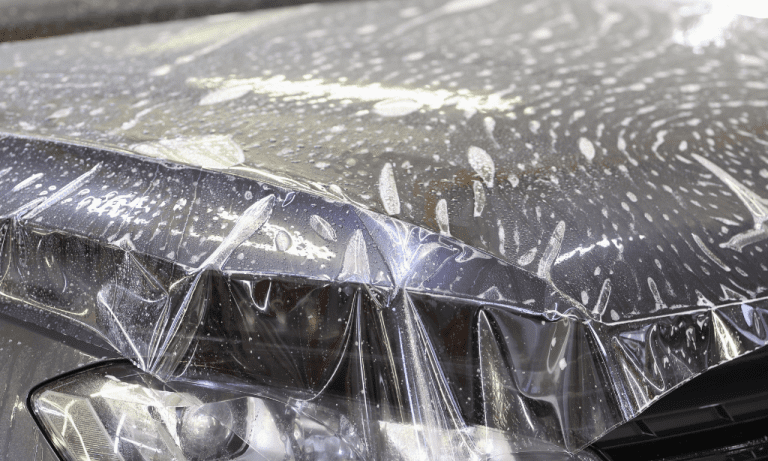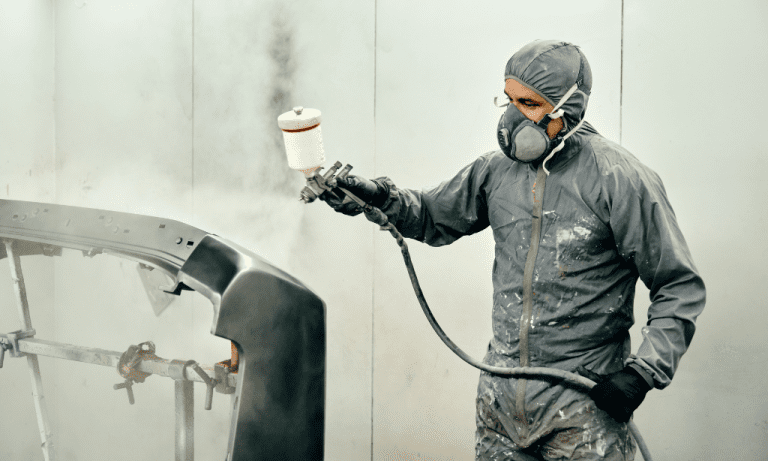Will Antifreeze Damage Your Car Paint? (Guard Your Vehicle with Care)
Antifreeze can potentially damage car paint. It is important to handle antifreeze carefully to avoid contact with the car’s exterior.
When antifreeze comes into direct contact with car paint, it can cause discoloration or even peeling. This damage is particularly evident with prolonged or repeated exposure. Therefore, it is crucial to wipe off any spills or splatters of antifreeze immediately with a clean cloth to prevent harm to the paintwork.
It is also wise to keep antifreeze containers away from the car’s exterior to minimize the risk of accidental spills. By taking these precautions, you can help protect your car’s paint from the potentially harmful effects of antifreeze.
Understanding The Potential Risks
Antifreeze is a crucial component in keeping our vehicles running smoothly, especially during the cold winter months. But as car owners, it’s essential to understand the potential risks that antifreeze can have on our vehicle’s paint. In this section, we will delve into the chemical properties of antifreeze and examine common misconceptions about its impact on car paint damage.
What Is Antifreeze And How Does It Work In Your Vehicle?
- Antifreeze, also known as coolant, is a liquid substance that helps regulate the temperature of your vehicle’s engine.
- Its primary function is to prevent the coolant from freezing in low temperatures and boiling in high temperatures.
- Antifreeze contains a mixture of chemicals, typically ethylene glycol or propylene glycol, blended with water to achieve the desired freezing and boiling point properties.
- When mixed with water, antifreeze lowers the freezing point of the coolant, thus allowing it to continue circulating throughout the engine even in freezing temperatures.
The Chemical Properties Of Antifreeze And Its Potential Impact On Car Paint
- Antifreeze, when in contact with car paint, can potentially cause damage due to its chemical composition.
- Antifreeze contains corrosion inhibitors that protect engine components from rust and corrosion.
- However, these inhibitors can have adverse effects on painted surfaces, potentially causing discoloration, staining, or even peeling.
- The active ingredient in most antifreeze products, ethylene glycol, is known to be hygroscopic, meaning it attracts and absorbs moisture from the surroundings.
- Moisture absorption can lead to paint damage, as the water content in antifreeze can promote oxidation and corrosion on the car’s surface.
Examining Common Misconceptions About Antifreeze And Car Paint Damage
- One common misconception is that antifreeze will directly cause immediate damage to car paint upon contact. However, the extent of the damage depends on various factors such as concentration, duration of exposure, and the type of paint and clear coat used on the vehicle.
- Another misconception is that all antifreeze brands will have the same impact on car paint. In reality, different antifreeze products contain varying chemical compositions, which may have different effects on car paint.
- It’s crucial to note that the risk of car paint damage from antifreeze can be minimized by taking preventative measures, such as ensuring proper containment and cleaning up any spills or leaks promptly.
- Regularly washing and waxing your vehicle can also help protect the paint from potential damage.
Understanding the potential risks associated with antifreeze and its impact on car paint is paramount for car owners. By being aware of these factors, we can take necessary precautions to minimize any potential damage and ensure our vehicles maintain their appearance for years to come.
So, let’s dive deeper into the topic and debunk more myths related to antifreeze and car paint damage.
The Effects Of Antifreeze On Car Paint
Antifreeze is an essential component in maintaining the proper functioning of our vehicles, especially in colder climates. However, have you ever wondered about its potential effects on your car’s paintwork? In this section, we will delve into the effects that antifreeze can have on car paint, ways to identify any damage, and factors that can either worsen or alleviate this damage.
How Antifreeze Spills And Leaks Can Lead To Paint Damage:
- Spills and leaks of antifreeze can occur during the refilling or maintenance of our vehicles. These incidents can happen on the car’s surface or even in the engine compartment, eventually making their way onto the paintwork.
- Antifreeze contains chemicals, such as ethylene glycol, which can be harmful to car paint. When they come into contact with the vehicle’s surface, they can cause damage or discoloration, depending on the concentration and amount of antifreeze involved.
- The effects of antifreeze on car paint can be particularly noticeable when spills or leaks are left unattended for an extended period. Ignoring or delaying clean-up and repair can lead to more severe damage, potentially necessitating expensive repairs or even repainting.
Identifying Signs Of Antifreeze Damage On Your Car’S Paintwork:
- One of the most apparent signs of antifreeze damage is discoloration or stains on the paint. These stains can appear as irregular patches or streaks, often with a yellowish or greenish tint.
- Depending on the severity of the damage, the affected areas may also exhibit signs of peeling, cracking, or bubbling. These abnormalities indicate that the antifreeze has penetrated the protective layers of paint, causing significant harm.
- Additionally, antifreeze damage might also be accompanied by a noticeable difference in the affected area’s texture. It may feel rough, uneven, or even slightly sticky to the touch.
Factors That Can Exacerbate Or Mitigate The Damage Caused By Antifreeze:
- The length of time antifreeze remains on the car’s paint plays a crucial role in the extent of the damage. Promptly addressing any spills or leaks will minimize the exposure and reduce the likelihood of severe harm.
- Environmental factors, such as temperature and humidity, can affect the speed at which antifreeze reacts with the paint and exacerbate the damage. Extreme cold or hot weather conditions can intensify the corrosive properties of the chemicals in antifreeze.
- Regular car maintenance, including cleaning and waxing, can act as a protective barrier against antifreeze damage. Washing the vehicle promptly after any spills and applying a layer of wax can help shield the paint from harmful chemicals.
- It’s important to remember that the type of paint on your car can also influence its resilience against antifreeze damage. Some paint finishes, such as clear coats, tend to be more resistant to chemical reactions, while others may be more susceptible.
By being aware of the effects of antifreeze on car paint and taking appropriate preventive measures, you can maintain the appearance and value of your vehicle. Promptly addressing spills or leaks, identifying signs of damage, and considering factors that can exacerbate or mitigate the damage will help ensure your car’s paintwork remains in pristine condition for years to come.
Protecting Your Car Paint From Antifreeze Damage
Antifreeze is an essential component for keeping our cars running smoothly, especially in cold weather conditions. However, have you ever wondered if antifreeze can potentially damage your car’s paint? In this section, we’ll explore the steps you can take to protect your car paint from antifreeze damage.
Steps To Prevent Antifreeze Spills And Leaks In Your Car
To avoid any mishaps and potential damage to your car’s paintwork, here are some preventive measures you can take:
- Regularly check your car’s coolant system for any leaks or cracks. This will help identify any potential antifreeze spills before they happen.
- Ensure that the coolant reservoir cap is tightly sealed and secure. Loose caps can lead to spills and leaks.
- Keep an eye out for any signs of coolant leakage, such as puddles or stains under your car. If you notice any, it’s crucial to address the issue promptly.
- Park your car in a dry and well-ventilated area, away from direct sunlight. Extreme heat can cause antifreeze to evaporate and potentially damage the paint.
The Importance Of Regular Maintenance And Inspections
Maintaining your car’s paintwork is not just about aesthetics; it also plays a vital role in protecting the underlying metal from corrosion. To preserve the integrity of your car’s paint and minimize the risk of antifreeze damage, consider the following:
- Schedule regular maintenance with a trusted mechanic or dealership to ensure that your coolant system is in optimal condition.
- Have your coolant levels checked regularly to prevent any potential leaks or spills.
- Conduct visual inspections of your car’s paint, looking out for any signs of discoloration, bubbling, or flaking, which could indicate underlying damage.
Best Practices For Tackling Antifreeze Spills To Minimize Paint Damage
Accidents can happen, even with the most cautious approach. If you find yourself dealing with an antifreeze spill, here are some best practices to minimize potential paint damage:
- Act quickly – the longer the antifreeze sits on your car’s paint, the higher the chances of damage.
- Use a clean cloth or paper towel to blot and absorb the spilled antifreeze, avoiding any rubbing or scrubbing motions that could spread it further.
- Rinse the affected area thoroughly with water to dilute and remove any residual antifreeze.
- If necessary, use a mild soap or car wash solution to gently clean the area, being careful to rinse thoroughly afterward.
- Consider seeking professional assistance or advice if the spill has caused significant damage or if you’re unsure of how to proceed.
By following these steps and maintaining a proactive approach to prevent and address antifreeze spills, you can help safeguard your car’s paint from potential damage. Remember, regular maintenance and inspections are key to keeping your car in top shape, both mechanically and aesthetically.
Diy Solutions For Antifreeze Stains On Car Paint
Antifreeze stains on car paint can be a frustrating sight for any car owner. But fear not, there are effective diy solutions to safely remove these stains and restore the beauty of your vehicle. In this section, we will discuss the key methods, materials and tools needed, as well as tips for preventing further damage while treating antifreeze stains.
Effective Methods To Safely Remove Antifreeze Stains From Car Paint
- Blotting: Start by blotting the stain with a clean cloth or rag to remove any excess liquid. Avoid rubbing or wiping, as this may spread the stain further.
- Dish soap solution: Mix a few drops of mild dish soap with warm water to create a gentle cleaning solution. Use a sponge or soft brush to apply the solution to the stained area, gently scrubbing in a circular motion.
- Vinegar solution: Another effective diy solution is to mix equal parts of white vinegar and water. Apply the solution to the stain and let it sit for a few minutes before gently scrubbing with a sponge or brush.
- Baking soda paste: Create a paste by mixing baking soda with water until it forms a thick consistency. Apply the paste to the stain and let it sit for about 15 minutes. Then, gently scrub the area with a soft brush and rinse with water.
Materials And Tools Needed For Diy Stain Removal
- Clean cloth or rag
- Mild dish soap
- Warm water
- Sponge or soft brush
- White vinegar
- Baking soda
Tips For Preventing Further Damage While Treating Antifreeze Stains
- Act quickly: The sooner you address the antifreeze stain, the easier it will be to remove. Prompt action can prevent the stain from penetrating the paint layer.
- Test on a small area: Before applying any cleaning solution to the entire stain, test it on a small, inconspicuous area of the car paint to ensure it does not cause any damage or discoloration.
- Avoid harsh chemicals: While it may be tempting to use strong cleaning agents, they can potentially damage the car paint. Stick to mild and gentle solutions like dish soap, vinegar, and baking soda.
- Rinse thoroughly: After cleaning the stain, rinse the area thoroughly with water to remove any residue from the cleaning solutions. Ensure that no traces of the cleaning agents are left behind.
- Wax and polish: Once the stain is completely removed, consider waxing and polishing the affected area to restore the shine and protect the paint from future stains.
By following these diy solutions and taking preventive measures, you can safely remove antifreeze stains from your car paint and keep your vehicle looking its best. Remember to approach the stain removal process with care and caution to avoid causing any further damage to the paint.
Seeking Professional Help For Antifreeze Damage
When To Consult A Professional For Antifreeze-Related Paint Damage
Discovering antifreeze damage on your car’s paintwork can be disheartening. While some minor stains can be remedied at home, more severe damage may require professional assistance. Here are some key points to consider before deciding to seek professional help:
- Extent of damage: If the antifreeze has caused significant discoloration or etching on your car’s paint, it’s best to consult a professional. They have the expertise to assess the extent of the damage and determine the most effective solution.
- Specialized tools and techniques: Professionals at auto body shops have access to specialized tools and techniques that can effectively restore your car’s paint to its former glory. These professionals are trained in paint repair and restoration, ensuring that the damage is addressed correctly.
- Time and effort: While minor antifreeze stains can be remedied at home, dealing with more extensive damage can be time-consuming and labor-intensive. By seeking professional assistance, you can save yourself the hassle and ensure a high-quality repair job.
Choosing A Reputable Auto Body Shop For Repair And Restoration
Finding a reputable auto body shop is vital to ensure your car receives top-notch care and the best possible outcome. Here are some factors to consider when choosing the right auto body shop for your antifreeze damage repairs:
- Recommendations and reviews: Seek recommendations from friends, family, or trustworthy online sources. Check online reviews to gauge the reputation and quality of work of different auto body shops in your area.
- Expertise and experience: Look for an auto body shop with experience in repairing paint damage caused by antifreeze. Experienced professionals can handle a wider range of damage and provide tailored solutions.
- Certifications and warranties: Inquire about the certifications and warranties offered by the auto body shop. Certifications ensure that the shop meets industry standards, while warranties give you added peace of mind regarding the longevity of the repair.
- Customer service: Evaluate the level of customer service offered by the auto body shop. A friendly and responsive staff can make the repair process smoother and more enjoyable.
Costs And Potential Insurance Coverage For Antifreeze Damage Repairs
Before committing to professional repairs for antifreeze damage, it’s essential to consider the costs involved and potential insurance coverage. Here’s what you should know:
- Cost estimation: Request a detailed cost estimation from different auto body shops. This will help you compare prices and choose the most cost-effective solution without compromising quality.
- Insurance coverage: Check your insurance policy to see if it covers antifreeze damage repairs. If so, understand the extent of coverage and any requirements or limitations.
- Claim process: If your insurance covers antifreeze damage repairs, familiarize yourself with the claims process. Ensure that you gather all necessary documentation and file the claim correctly.
- Deductibles: Determine if there are any deductibles you need to pay out of pocket before your insurance coverage kicks in. Understanding your financial obligations beforehand can prevent surprises.
By considering these factors and seeking professional help when necessary, you can minimize the damage caused by antifreeze and restore your car’s paint to its original condition. Remember, prevention is always better, so it’s crucial to handle antifreeze with care to avoid any potential damage.
Additional Tips For Protecting Your Vehicle
Antifreeze is a crucial component for maintaining the functionality of our vehicles, especially during the colder months. However, it’s not uncommon for car owners to have concerns about the potential effects of antifreeze on their car’s paint. After all, we want our vehicles to not only run smoothly but also look good while doing so.
In this section, we will provide you with some valuable tips on protecting your vehicle’s paint and ensuring its longevity. So, let’s dive in!
Importance Of Regular Car Washes And Waxing For Paint Protection
- Regular car washes are essential in removing dirt, debris, and other contaminants that can accumulate on your car’s surface. These particles, if left untreated, can damage the paint over time.
- Waxing your car creates a protective barrier that shields your paint from environmental factors such as uv rays, pollution, and harsh weather conditions. Waxing also gives your car a brilliant shine that adds to its overall aesthetic appeal.
Guidance On Storing And Handling Antifreeze Properly
- Always store antifreeze in a safe and secure location, away from children and pets. This helps prevent accidental exposure and ingestion, as antifreeze contains toxic substances.
- When handling antifreeze, wear protective gloves and goggles to shield yourself from any potential skin or eye irritation.
- Dispose of used antifreeze responsibly by following your local regulations. Improper disposal can harm the environment and pose health risks.
Overall Maintenance Practices To Ensure Your Car’S Longevity And Appearance
- Keep your car parked in the shade whenever possible. Prolonged exposure to direct sunlight can cause fading and damage to your car’s paint.
- Regularly inspect your vehicle for any signs of rust, dents, or scratches. Addressing these issues promptly can prevent further paint deterioration.
- Avoid using abrasive materials or harsh chemicals when cleaning your car. Opt for gentle products and soft microfiber cloths.
By incorporating these tips into your car care routine, you can protect your vehicle’s paint from the potential harm of antifreeze and maintain its appearance for years to come. Remember, a little extra effort goes a long way in preserving the beauty and longevity of your beloved ride.
Conclusion
To sum up, it is crucial to understand the potential consequences of antifreeze on car paint. While antifreeze itself may not directly harm the paint, its ethylene glycol component can be detrimental. If spills occur, immediate action is necessary to prevent damage.
Cleaning the affected area promptly with soap and water is recommended. Additionally, waxing the car and providing a protective layer can help safeguard against any possible harm from antifreeze. It is also essential to store antifreeze properly and dispose of any excess responsibly.
Regular inspection of the car’s paintwork and addressing any issues promptly is crucial for maintaining its overall appearance. By following these precautions and taking proper care, you can mitigate any potential harm that antifreeze may pose to your car’s paint, ensuring its longevity and aesthetic appeal.
- Protecting Your Truck Bed: A Guide To Truck Bed Covers - July 14, 2025
- Finding The Right 88-98 Chevy Truck Bed Cover - July 14, 2025
- Finding The Right 88-98 Chevy Truck Bed Cover - July 14, 2025





